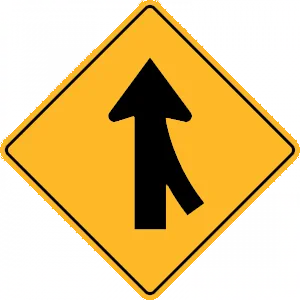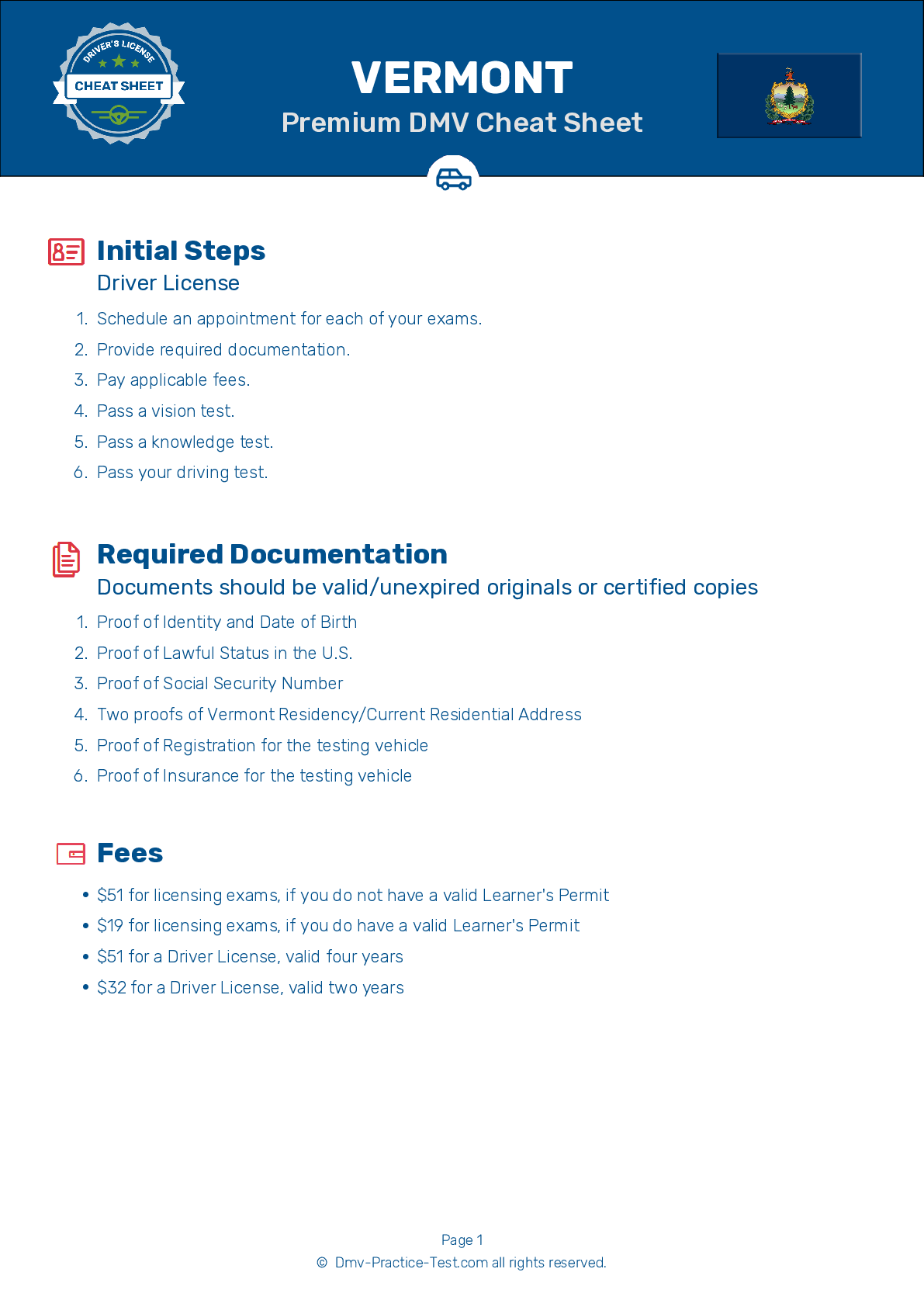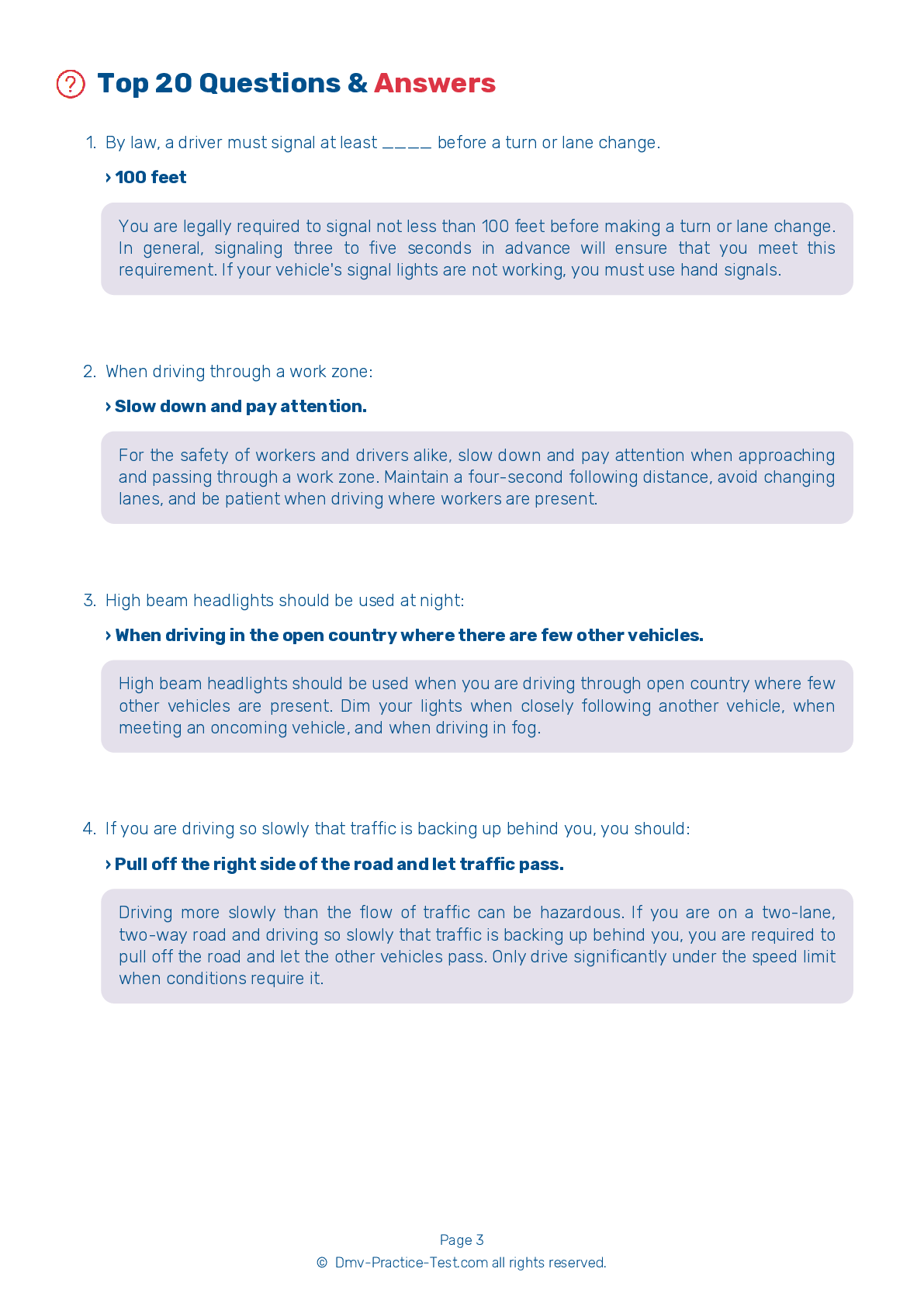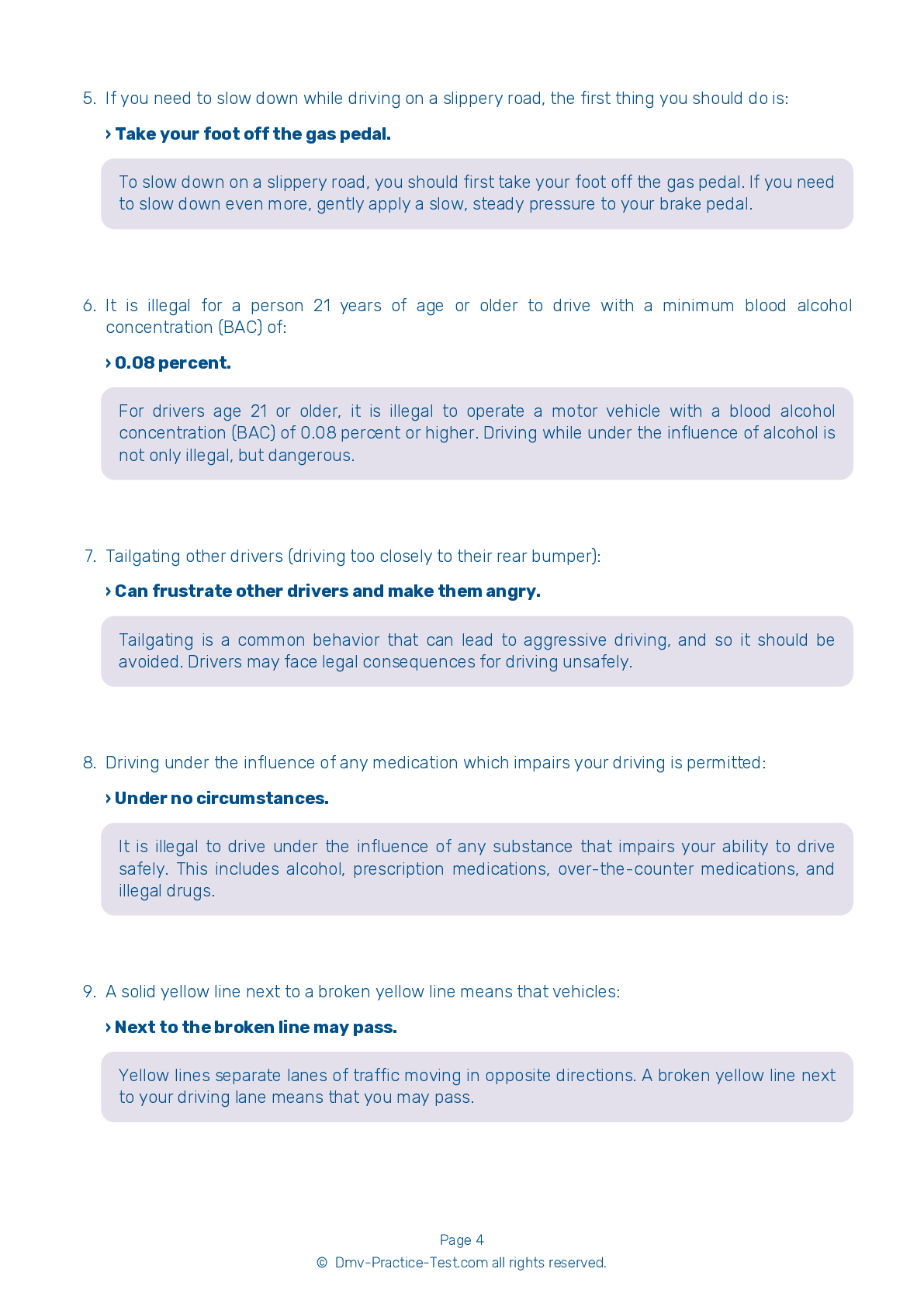FREE Vermont DMV Practice Test #24 Page 3 of 3
The Vermont DMV practise examinations have been updated for January 2025. It includes questions based on the Vermont Driver Handbook's most significant traffic signals and legislation for 2025. Use actual questions that are very similar (often identical!) to the DMV driving permit test and driver's licence exam to study for the DMV driving permit test and driver's licence exam.
On the practise exam, each question gets a tip and explanation to help you remember the concepts. The written component of the official Vermont DMV test will include questions about traffic rules, traffic signs, and driving statutes, as well as knowledge from the Driver Handbook.
To obtain a passing grade, you must correctly answer 16 of the 20 questions. Use the practise exam provided by the Vermont Department of Motor Vehicles to help you prepare for your instruction permit or driver's licence.
The DMV exam is available in several languages.
Using any kind of testing assistance will result in an automatic fail, and the DMV may take additional action against your driver's licence, so stay away from it.
14 . This sign means:

This sign indicates that there is merging traffic entering from the right.
15 . Roads freeze quickly when they are:
In cold or wet weather, you should take special care on sections of road that are shaded by trees or buildings. These areas freeze more quickly than the rest of the road and are the last parts of the road to dry.
16 . Which of the following lights indicates that you should slow down and proceed with caution at an intersection?
A flashing yellow traffic light at an intersection indicates that drivers must slow down, proceed with caution, and be prepared to stop.
17 . Stress can affect your driving by:
Emotions can have a great effect on your driving ability. You may not be able to drive well if you are overly worried, excited, afraid, angry, or sad. Stress can lessen your concentration on the task of driving. It is better to wait to drive than to risk driving while you are emotionally unstable.
18 . To prevent hydroplaning, you should:
To prevent hydroplaning, you should ensure that the tires on your vehicle have good tread depth and are inflated to the proper pressure. Reduce the speed of your vehicle when driving in the rain. Hydroplaning occurs most frequently at higher speeds.
19 . A driver approaching a green traffic light:
When turning left at a green traffic light, you must yield the right-of-way to oncoming traffic. You may proceed when the way is clear.
20 . You want to turn left at an intersection. The light is green but oncoming traffic is heavy. You should:
When making a left turn where there is approaching traffic, you must wait for the approaching traffic to go through before you turn. You may enter the intersection to prepare for your left turn if the light is green and no other vehicle ahead of you plans to make a left turn.
Need Car Insurance? No problem!
Compare the best rates in Vermont and find a personalized policy that meets your needs.
1. Are You Currently insured ?
2. Married ?
3. Do you own your Home?
4. Do you have more than 1 car ?
5. Have you or a Family Member Honorably Served in U.S. Military ?
6. Your Name
7. Age
8. Zip code
IMPORTANT REMINDER:Auto Insurance is Mandatory to drive in Vermont. Get covered before you hit the road to avoid any fines.
Ranked by best match
2025 Vermont | Frequently Asked Questions
1. Not checking mirrors and blind spots before changing lanes or turning.
2. Speeding or driving too slowly for the conditions or posted speed limit.
3. Not coming to a complete stop at stop signs or red lights.
4. Incorrect signalling or not signalling at all.
5. Poor parking, especially parallel parking.
Remember, practice makes perfect, so take time to hone your skills.



